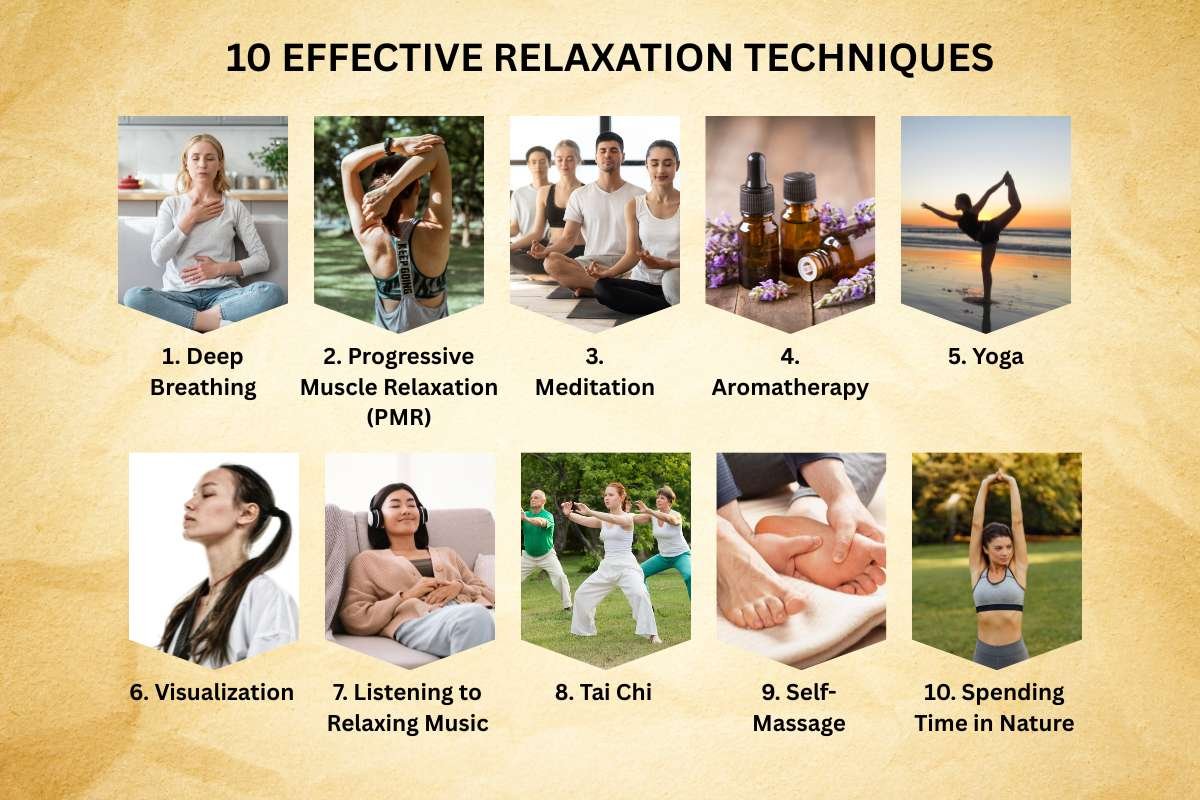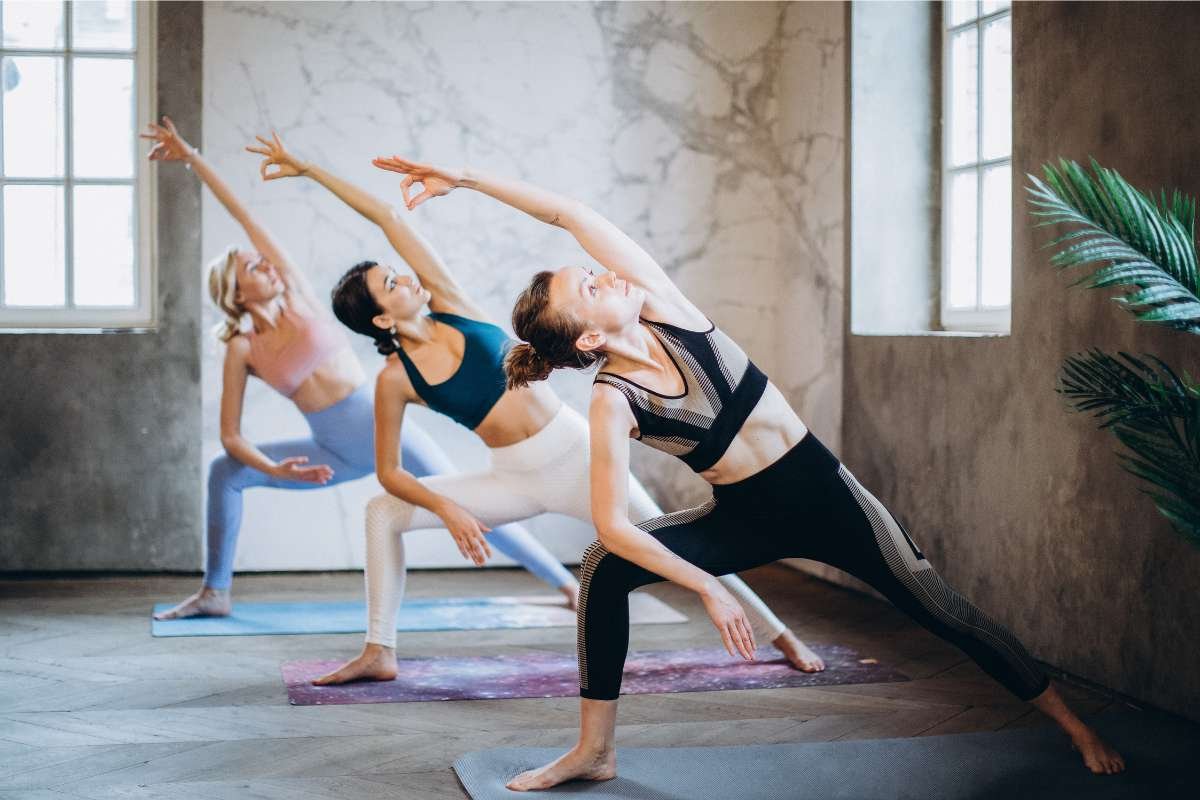Stress has become an inevitable companion in our daily lives. From the pressure to meet deadlines to the constant demands of social media, stress can feel like an ever-present shadow. But how much of this stress are we carrying around with us? Dedicating just a few minutes daily to simple relaxation techniques can effectively lower your stress levels, improve mental clarity, and enhance your overall well-being.
With the rise of stress-related health issues such as anxiety, depression, and even heart disease, it has never been more critical to incorporate relaxation into our daily lives. You can reclaim your peace and calm with simple, relaxing methods, no matter how chaotic your day may seem. From deep breathing to mindful movement, these techniques are simple yet powerful tools to help you maintain mental and physical balance.
In this blog, we’ll discuss
10 effective relaxation techniques you can easily incorporate into your routine and how they can help you de-stress and reconnect with your inner calm.

1. Deep Breathing
When stress strikes, our bodies tend to react by shallow breathing, which triggers the body’s stress response. This quick and shallow breathing often indicates that the body is in fight-or-flight mode. One of the simplest relaxation techniques is deep breathing. It’s an incredibly effective method that can instantly calm the nervous system and reduce stress.
To practice deep breathing, sit or lie down in a quiet space. Inhale deeply through your nose for a count of four, hold for a second, and then slowly exhale through your mouth for a count of six. This technique helps activate the parasympathetic nervous system, which is responsible for relaxation. Repeat this process for several minutes, and the tension will ease.
Also Read :- Feel Calm and Focused with These 10 Breathing Exercises
2. Progressive Muscle Relaxation (PMR)
Progressive Muscle Relaxation (PMR) is a well-established relaxation technique that involves systematically tensing and then relaxing different muscle groups in your body. This technique helps you recognize areas where tension may be building, particularly in the shoulders, neck, and jaw. You can relieve this built-up stress and feel more grounded by tensing and releasing muscle groups.
To practice PMR, start with your toes, tensing them for five seconds, then release. Gradually move up your body, focusing on areas like your calves, thighs, abdomen, and arms. End with your face and neck. With each muscle group, focus on the sensation of relaxation that follows the tension, and notice how your body feels lighter and more relaxed after each release.
3. Meditation
Meditation is one of the most powerful relaxation techniques for improving mental clarity and emotional well-being. Meditation helps you quiet the mind, reduce stress, and increase mindfulness, enhancing your ability to stay present. Whether it’s 5 minutes or 30, regular meditation practice can significantly lower anxiety levels and promote relaxation.
One simple form of meditation is mindfulness meditation. To start, sit comfortably, close your eyes, and focus on your breath. When your mind begins to wander, gently bring your attention to the sensation of your breath entering and leaving your body. Over time, meditation can help you stay calm even in stressful situations.
4. Aromatherapy
Aromatherapy is an easy and enjoyable relaxation technique that uses essential oils to promote calmness and relaxation. Scents like lavender, chamomile, and bergamot have been shown to reduce anxiety and help lower blood pressure. You can use a diffuser to fill your space with calming fragrances or inhale the scent directly from the bottle.
In addition to using essential oils, you can also add a few drops to a warm bath or massage them into your skin with a carrier oil. Aromatherapy can be an excellent way to enhance other relaxation techniques, such as deep breathing or meditation, to help you feel even more relaxed.
5. Yoga

Yoga is one of the well-known relaxation techniques that combines gentle physical movements, breathing exercises, and meditation. Regular yoga can help reduce stress, improve flexibility, and enhance mental clarity. Yoga encourages mindfulness, which is crucial for reducing anxiety and promoting relaxation.
For beginners, start with basic poses like Downward Dog, Child’s Pose, or Seated Forward Fold. Focus on your breath as you move through each pose, and notice how your body feels as you stretch and release tension. As you progress, you can explore more advanced poses and styles of yoga, but even a few minutes a day can help you relax and find calm.
6. Visualization
Visualization, or guided imagery, is a relaxation technique where you mentally picture a peaceful scene to calm your mind. To practice visualization, close your eyes, take a few deep breaths, and begin to picture a place where you feel completely at ease. Visualization is a great way to momentarily escape from life’s stressors and reconnect with your sense of peace.
7. Listening to Relaxing Music
Music has long been recognized as an effective stress reliever, making it one of the most accessible relaxation techniques. Soft, calming music can reduce anxiety, lower heart rates, and improve sleep. Genres like classical, ambient, or natural sounds are particularly effective in creating a peaceful environment.
You can create a playlist of soothing tunes or explore soundtracks for relaxation, such as binaural beats or soothing instrumental tracks. Pair music with techniques like deep breathing or progressive muscle relaxation to enhance the effects and guide yourself into a relaxed state.
8. Tai Chi
Tai Chi is an ancient Chinese practice that combines slow, deliberate movements with deep breathing. This form of exercise is a low-impact relaxation technique that promotes energy flow throughout the body. Tai Chi’s focus on slow movements and mindful breathing helps reduce stress, improve balance, and increase physical flexibility.
While Tai Chi may initially seem complicated, beginners can start with basic forms and move to more advanced movements. Whether practiced in a group or alone, Tai Chi can be an excellent way to relax both your body and mind, and it’s particularly beneficial for individuals seeking a gentle form of exercise.
9. Self-Massage
A self-massage is an effective relaxation technique that can immediately relieve stress and tension. Massaging your hands, neck, shoulders, or feet can help release built-up tension and promote a sense of calm. You don’t need special tools—your hands are all you need. To start, gently rub your hands together to warm them up, then slowly massage your neck, shoulders, or scalp in circular motions. Focus on areas where you feel the most tension.
10. Spending Time in Nature
.jpg)
Nature has a powerful, calming effect on the body and mind. Spending time outdoors in green spaces or near water can lower cortisol levels, reduce anxiety, and improve overall mood. This simple yet effective relaxation technique allows you to step away from technology and the pressures of daily life. Even a short 10-15 minute break outdoors can be enough to reset your mind and refresh your mood.
Conclusion
Incorporating relaxation techniques into your daily routine can dramatically improve your ability to manage stress, enhance mental clarity, and improve overall well-being. Stress is a natural part of life, but with the right tools, it doesn’t have to control your mind or body. By prioritizing relaxation, you can lead a more balanced and peaceful life. So, the next time you feel overwhelmed, try one of these 10 techniques and take a moment to reconnect with yourself.
Also Read :- World Health Day 2025: Simple Habits to Lead a Healthier, Disease-Free Life









